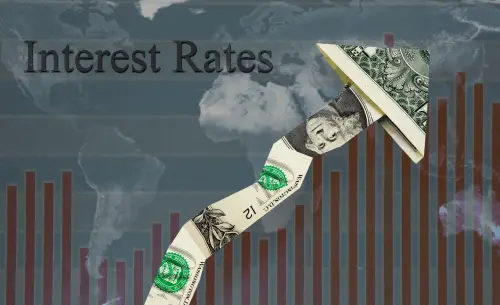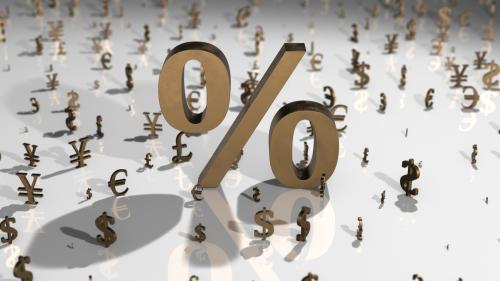This paper is part of the Spring 2020 edition of the Brookings Papers on Economic Activity, the leading conference series and journal in economics for timely, cutting-edge research about real-world policy issues. Research findings are presented in a clear and accessible style to maximize their impact on economic understanding and policymaking. The editors are Brookings Nonresident Senior Fellow and Northwestern University Professor of Economics Janice Eberly and Brookings Nonresident Senior Fellow and Harvard University Professor of Economics James Stock. Read summaries of all five papers from the journal here.
The data and programs for this paper are available here.
Inflation has been largely disconnected from business cycle ups and downs over the past 30 years. This puzzling observation is one more reason why the Federal Reserve should consider adopting a systematic monetary policy strategy that reacts more forcefully to off-target inflation—whether too high or too low, suggests a paper to be discussed at the Brookings Papers on Economic Activity conference on March 19.
Authors Marco Del Negro and Andrea Tambalotti of the Federal Reserve Bank of New York, Michele Lenza of the European Central Bank, and Giorgio Primiceri of Northwestern University examine the origins of this disconnect between inflation and economic activity. They conclude that shifting structural forces likely are its principal explanation and explore how monetary policy should adapt.
The U.S. central bank is required by law to pursue two goals: maximum employment and price stability. That means, roughly speaking, an economy growing fast enough to supply a job to everyone who wants one, without the economy overheating and pushing inflation too high.
It used to be, when the economy got hot and pushed unemployment down, inflation rose as businesses charged higher prices to meet higher wages and other increased costs. When the economy cooled and joblessness rose, inflation declined. (The relationship is known as the Phillips Curve after economist William Phillips who in the 1950s observed the connection between unemployment and wages in data for the United Kingdom.)
But, in What’s Up with the Phillips Curve?, the authors note that inflation in the United States has remained remarkably stable since 1990, even in the face of pronounced cycles in economic activity. For example. the unemployment rate has fallen from a 25-year high of 10 percent in 2009 during the Great Recession to near 50-year lows of at or under 4 percent over the past two years. But U.S. inflation hasn’t responded much to the steep drop in joblessness and remains somewhat short of the Fed’s 2 percent inflation target.

Using several modeling techniques, the authors rule out some explanations of this disconnect between inflation and the business cycle. They rule out changes in the structure of the labor market, since wages have responded more normally than prices to rising and falling unemployment. And they eliminate measurement problems since various proxies for cost pressures—such as the production of goods and services, the unemployment rate, hours worked, and businesses’ cost per unit produced—have moved together more or less as they always have over the period examined—1964-2019.
Changes in the conduct of monetary policy appear to have played some role in inflation stability in recent decades, but they cannot be its principal explanation, the authors suggest. They again point to the Great Recession. Easier monetary policy fell short of fully offsetting the crisis’ huge shock to demand for goods and services—witness the increase of unemployment to 10 percent—yet inflation remained relatively stable. That must be for some reason other than an improvement in the ability of monetary policy to keep the economy, and hence inflation, stable, they conclude.
Inflation in the United States has remained remarkably stable since 1990, even in the face of pronounced cycles in economic activity.
Their leading candidate for the driver of inflation stability is a reduced sensitivity of inflation to cost pressures—such as those associated with wage movements—or, in economic parlance, a decline in the slope of the Phillips curve. This could be due to many structural forces—such as the increased relevance of global supply chains, heightened international competition, and other effects of globalization. The authors do not solve the mystery. They do, however, elaborate on the main policy implications of a flatter Phillips curve.
“A flat Phillips Curve requires the monetary authority to work harder to stabilize inflation: Unemployment needs to get lower to bring inflation back to target after a recession,” the authors write. They use an econometric model to explore how monetary policy should adapt, examining, for example, a strategy known as average inflation targeting—one of several strategies the Federal Reserve has been evaluating during a public review of its monetary policy framework.
A flat Phillips Curve requires the monetary authority to work harder to stabilize inflation: Unemployment needs to get lower to bring inflation back to target after a recession.
The Federal Reserve currently pursues its 2 percent inflation objective by letting bygones be bygones, meaning that whenever inflation is too high or too low it seeks to move it back toward its target, regardless of how long inflation has been away from it. (The problem with too-low inflation is that it means nominal interest rates are also very low, leaving monetary policymakers with little ammunition to fight economic downturns.)
Under average inflation targeting, instead, monetary policymakers would seek to make up for a period of too-low inflation by allowing inflation to temporarily run above target so that, over a specified period, it would average 2 percent.
“Systematic polices like average inflation targeting could be especially effective in bringing inflation back to 2 percent in the current environment,” the authors conclude.
David Skidmore authored the summary language for this paper. Becca Portman assisted with data visualization.
Citation
Del Negro, Marco, Michele Lenza, Giorgio E. Primiceri, and Andrea Tambalotti. 2020. “What’s up with the Phillips Curve?” Brookings Papers on Economic Activity, Spring, 301-373.
Conflict of Interest Disclosure
Marco Del Negro is Vice President in the Macroeconomic and Monetary Studies Function of the Research and Statistics Group of the Federal Reserve Bank of New York; Michele Lenza is Head of Section for the Monetary Policy Research Division of the European Central Bank, the Forecasting and Business Cycle group leader and research coordinator for the European Central Bank, and a member of the Forecast Steering Committee for the European Central Bank; Giorgio Primiceri is a professor of economics at Northwestern University and co-editor of the American Economics Journal; Andrea Tambalotti is Vice President of the Federal Reserve Bank of New York. Beyond these affiliations, the authors did not receive financial support from any firm or person for this paper or from any firm or person with a financial or political interest in this paper. The views expressed in this paper are those of the authors, and do not necessarily reflect those of Northwestern University, the American Economics Journal, the Federal Reserve Bank of New York, or the European Central Bank.







